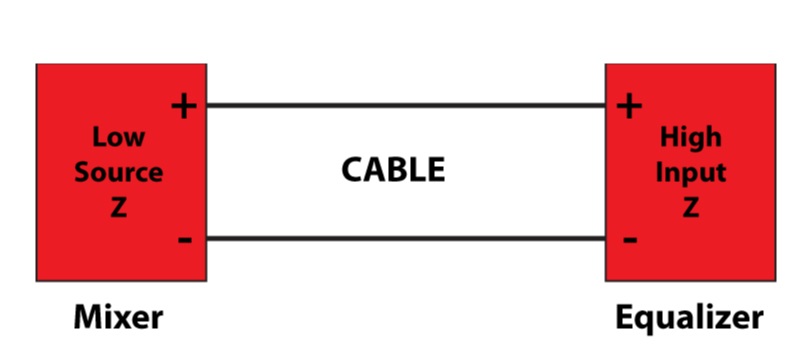
Pro Audio Definition
The typical professional audio meaning of constant voltage is with regard to an amplifier driving a loudspeaker or loudspeakers through step-down transformers. The amplifier is operated at its full voltage swing, and a transformer “steps down” this voltage before applying it to the loudspeaker.
The amplifier’s output voltage can be anything, but it’s usually referenced to a standard value, such as 25 volts, 70.7 volts, or 100 volts (Figure 3). These are the rms (root mean square) voltage for a reference sine wave from the amplifier. Of course, the actual Vrms varies wildly depending on the program material, which in most applications doesn’t resemble the sine wave that is used to rate the system.

This is an effective way to drive multiple loudspeakers from a single amplifier, such as in a meeting room. Someone at some time decided to call this a “constant voltage” distribution system and unfortunately the name stuck.
To add to the confusion, a “constant voltage” audio distribution system is “constant voltage” with regard to the amplifier-to-load voltage (the electrical engineering definition given above). In other words, the voltage on the line is independent of the total load impedance. Otherwise the sound level from each loudspeaker would change when additional loudspeakers are “bridged” across the line.
At SynAudCon we prefer to call this as a “transformer-distributed loudspeaker system” rather than a constant voltage system, but the latter term will most certainly live on and continue to cause confusion.
Voltage, Not Power
In both the electrical engineering and the audio industry definitions, the voltage is the parameter of interest. The interface is designed so that the signal voltage driving the amplifier’s input predictably influences the loudspeaker’s frequency response magnitude at the listener. It’s the signal voltage that we sculpt with our signal processors.

The CV interface is necessary so that audio filters (analog or digital) placed ahead of the power amplifier have a predictable effect on the sound pressure level at the listener. If it were a power-optimized interface (impedance-matched) then this would not be the case, since the voltage to the load (and the resultant loudspeaker frequency response) would be influenced by the loudspeaker’s impedance curve. Because the impedance is fixed and determines the current flow, the voltage is the only signal parameter that we can directly change by adjusting a control or applying a filter.
Yes, we’re in the “voltage” business even though the voltage is often hidden inside of a power rating. Just remember that in a “constant voltage” system the voltage is anything but constant. More correctly, it’s unaffected by changes in the load impedance.
